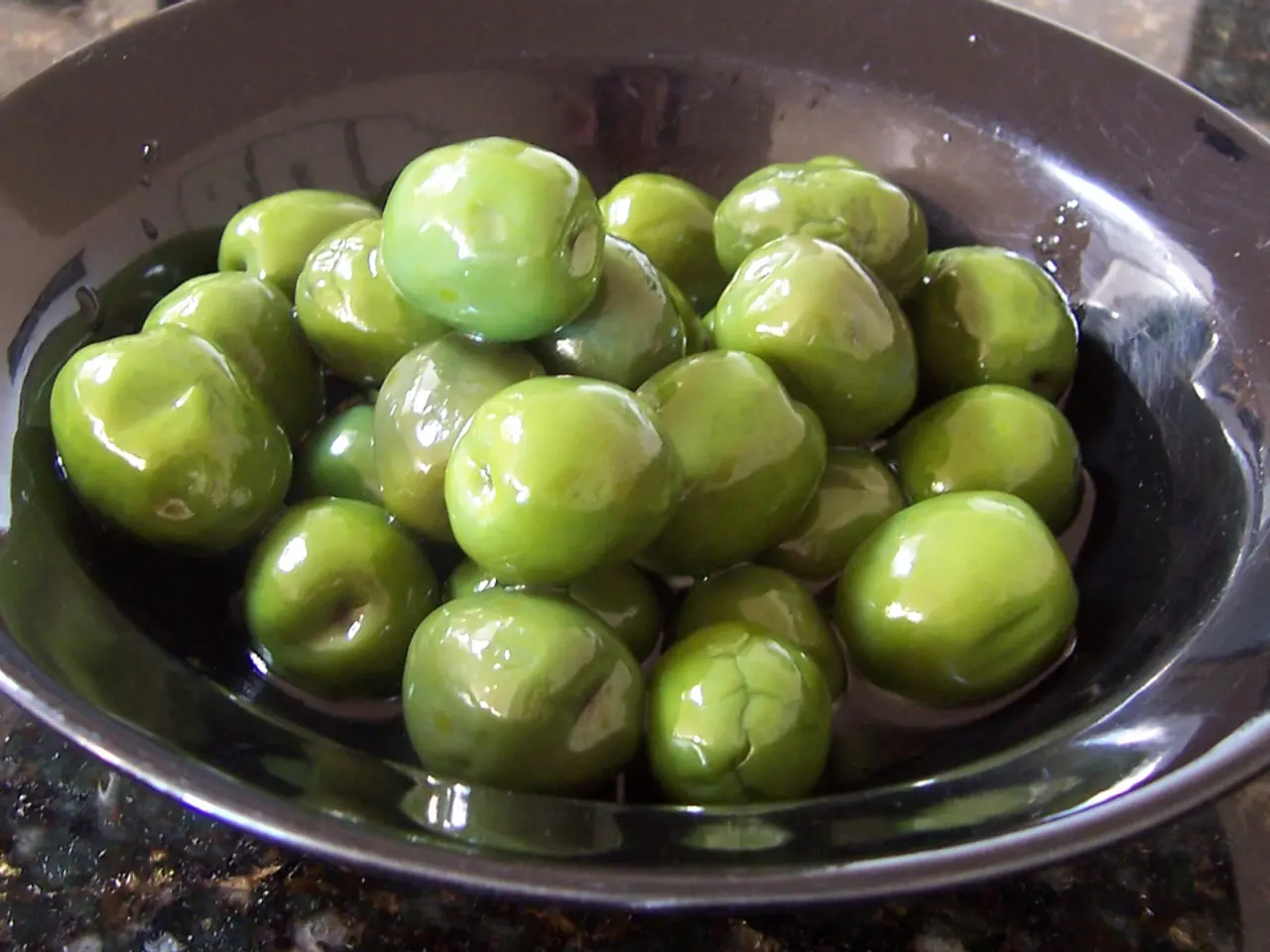Guidance on Cultivating Olive Trees
The olive tree, Olea europaea, a classic Mediterranean tree, can be successfully grown in the UK, both in borders and pots. With the right care and conditions, these trees can thrive and even bear fruit.
To propagate olive trees in pots, semi-ripe cuttings can be taken in summer, or hardwood cuttings in winter. For UK conditions, providing a sheltered, bright location indoors or in a greenhouse improves success.
Once established, olive trees in pots require regular watering during the growing season (March to October), ensuring the soil does not dry out, especially on hot or windy days. In winter, water sparingly to avoid waterlogging.
Feeding is essential to maintain the health of your olive tree. Use a slow-release olive tree fertiliser or tomato fertiliser during spring and summer. Seaweed liquid feed is also beneficial. Avoid fresh horse manure unless well rotted.
Lightly pruning in late winter or late spring to summer can help shape the tree and improve airflow, stimulating healthy growth. Pruning also prevents legginess and maintains balance.
Every 2-3 years, it's recommended to gently remove the tree from its pot, trim up to one-third of the root ball, and repot with fresh compost. This supports healthy root growth and prevents root-bound conditions.
Olive trees thrive in sunny, sheltered locations. When planting an olive tree in a pot, opt for a compact variety and use a loam-based peat-free compost with added horticultural grit.
It's important to note that extreme wet can cause leaves to drop and may weaken the tree, potentially allowing diseases such as verticillium wilt, phytopthora root rot, or honey fungus to take hold. To protect border-grown olive trees, horticultural fleece may be necessary in severe winter weather.
When it comes to pests, if an olive tree has white spots on the leaves, it's likely leaf scale. This can be treated by giving the tree a good soaking, allowing the water to drain, giving it a feed of liquid seaweed, and wiping off as much of the scale as possible.
Olive trees are host to the disease Xylella fastidiosa, which has been decimating continental European olive plantations. To avoid this, it's important to buy olive trees from a reputable supplier with an appropriate Plant Passport.
Olive scab is another fungal disease that causes spots on the leaves, excessive loss of foliage, and poor fruit production. To prevent this, growing olives in free-draining soil or compost is recommended.
A new olive tree will take around four years to bear fruit. Many cultivars of olive trees now tolerate cooler temperatures, making them suitable for the UK climate. Some popular varieties include Olea europaea 'Cipressino', a southern Italian variety with an upright, compact growth habit; Olea europaea 'Frantoio', a classic Tuscan olive tree that is self-fertile and the source of many bottles of olive oil; Olea europaea 'Arbequina', a Spanish variety that is small, vigorous, and has good tolerance of frost and poorer soils; and Olea europaea 'Leccino', a reliable Italian variety that does well in the UK climate.
Harvested olives need to be soaked in a brine solution for up to six weeks, changing the water regularly, to make them palatable. Olive trees lend themselves well to growing in pots and can benefit from being moved to a sheltered spot for winter.
In summary, olive trees in pots in the UK require regular watering during the growing season, balanced feeding, occasional pruning to promote good shape and airflow, repotting every few years with root pruning, and placement in sunny positions to thrive. Propagation is typically done via semi-hardwood cuttings under protected conditions. These practices mimic their Mediterranean origins while adapting to the UK's cooler climate.
Maintaining a healthy olive tree in a pot, when grown indoors or in a greenhouse, can be achieved by providing a suitable loam-based peat-free compost and horticultural grit for the planting location. To encourage growth, it's important to perform occasional pruning in late winter, late spring, or summer to enhance shape, airflow, and healthy growth while also preventing leggy growth.





